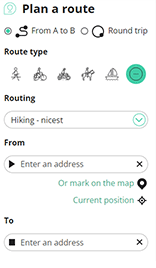Source: Willem Vandenameele
The lime kiln was built after the construction of the railway to Ciney. Every day a train carried the lime to the blast furnaces in the Longwy Basin where the lime was used to make iron.
The lime kiln consisted of an entryway to the furnace mouth (charge well), a truncated cone furnace, and openings for removing the charge from the furnace. It was filled with alternating layers of limestone and wood or wet coal. Along the lower discharge road, the quicklime ended up in dump carts.
The production of lime, obtained by calcining limestone at about 900 °C, was once one of the most important industries in the Meuse valley and the adjacent plateaus, where the raw material is found in abundance. Witness the presence, near the surrounding villages, of the remains of ovens, the chaufours or 'tchafors' in Walloon.
The structure of the furnaces, made of solid limestone masonry, forms the framework of boilers lined with refractory bricks. The chaufourniers, who we called 'de tchafornis', filled these cauldrons with straw, brushwood and wood halfway up from the loading openings on the upper terrace (the gueulards), interspersed with layers of lean coal and limestone. Then the fuel was ignited. When the flames appeared on the surface, the chaufourniers completed loading to two-thirds of the height of the boilers. It was expected that for 1T lime, after the extraction of incineration waste, an average of 2T limestone and 200 kg of lean coal would be needed.
Barring accidents, the kilns burned for 8 to 10 months. They were only shut down to make major repairs. Subject to the fire, the stones of the lower layers were transformed into limestones which, guided by a funnel structure (the tap), came to the outlets equipped with a system of grates. These side openings at the bottom of the tank allowed the diggers, called 'disforneus or Tireus al tchaus', to extract the lime using a saddle (a flat shovel consisting of a 3 to 4 m wooden handle and a pallet of about 15 cm or a tool with curved teeth) before loading it into a wheelbarrow. An unloading path made it possible to unload the lime into dumpers. This work was extremely delicatel, if only because of the outflow of gas and smoke. Unloading was a very delicate operation and to avoid unbalancing and collapsing the baking mass, the unloader pulled the lime in small amounts from one opening to the other so that the contents of the oven were evenly distributed on each side. fell. While the furnace was being emptied, the boilermaker refilled the furnace from the boiler.
When leaving the kiln, the lime is in the form of powder granules, which is called "quicklime" or calcium oxide (CaO). This quicklime is then "quenched" by immersion in water to obtain an inert product, "slaked lime" or calcium hydroxide (Ca(OH)2), which can be used in mortars and plasters.
In particular, on the walls of barns and chicken coops, a coating based on slaked lime and water was applied to prevent pests. It was also brushed on the trunks of fruit trees to control pests. The ashes from the stoves were used by farmers as fertilizer for crops.
With the advent of modern cement and fertilizer, lime lost much of its importance and, unable to compete with the big companies, most of the artisanal kilns in the region were abandoned.
Source: Willem Vandenameele
![]() | | Public | Danish • Dutch • French • German • Italian • Spanish
| | Public | Danish • Dutch • French • German • Italian • Spanish

Select one of the most popular activities below or refine your search.
Discover the most beautiful and popular trails in the area, carefully bundled into appropriate selections.
Source: Willem Vandenameele
Select one of the most popular categories below or be inspired by our selections.
Discover the most beautiful and popular attractions in the area, carefully bundled in appropriate selections.
Source: Willem Vandenameele
With RouteYou, it's easy to create your own customised maps. Simply plot your route, add waypoints or nodes, add places of interest and places to eat and drink, and then easily share it with your family and friends.
Route planner

<iframe src="https://plugin.routeyou.com/poiviewer/free/?language=en&params.poi.id=7577152" width="100%" height="600" frameborder="0" allowfullscreen></iframe>
© 2006-2025 RouteYou - www.routeyou.com